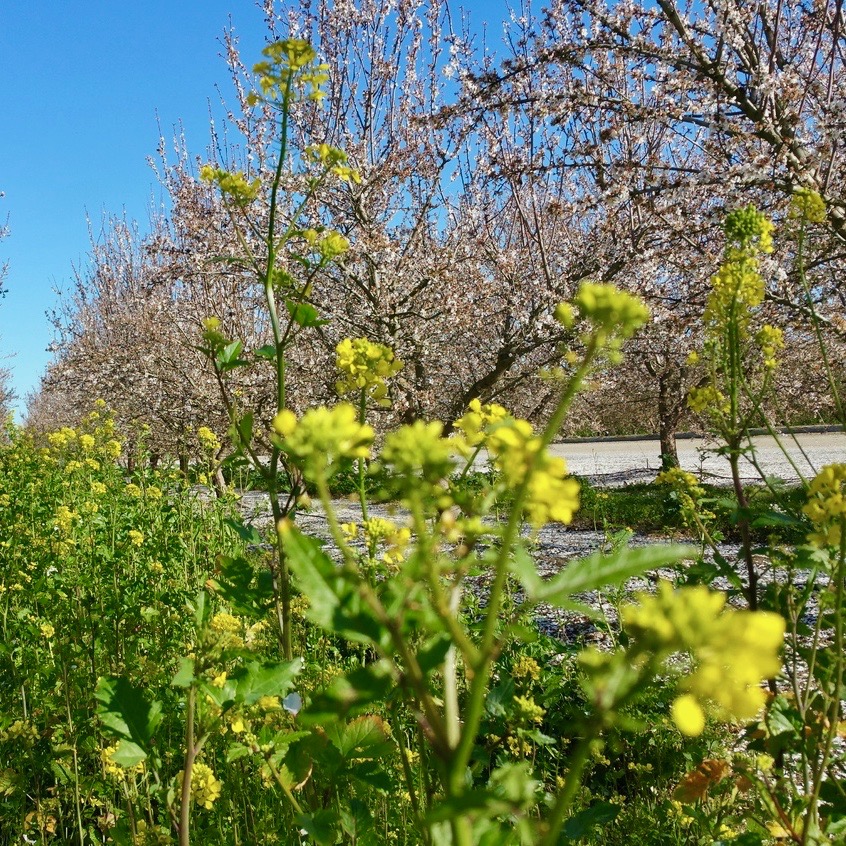Honey bees work hard during the almond bloom season to ensure the growth of our favorite nut, but it’s not a one-sided relationship!
Bees benefit from abundant single sources of high-quality pollen, like the pollen from almond blossoms. It helps colonies build up reserves of workers and stored food.1
And to make bees’ time in almond orchards even more beneficial, some almond farmers are working with honey bee research organization Project Apis m. and others to plant bee pastures near almond orchards. Bee pastures help ensure honey bees get a diverse mix of plant pollen and have an additional natural food source before and after almond bloom.
Since 2013, almond farmers have planted 27,000 acres of dedicated bee pasture through Project Apis m.’s Seeds for Bees program. That’s equal to 20,700 football fields, all filled with blooming plants for bees to enjoy.
Beyond providing additional nutrition for honey bees and other pollinators, these plantings may help farmers improve soil health, water infiltration and more.
Watch this video to learn more about the importance of bee pastures in almond orchards:
To learn more about the relationship between almonds and bees, please visit almonds.com/bees, and follow along with this year’s almond bloom on social media with the hashtag #almondbloom.
1USDA-ERS. Land Use, Land Cover, and Pollinator Health: A Review and Trend Analysis. June 2017.


